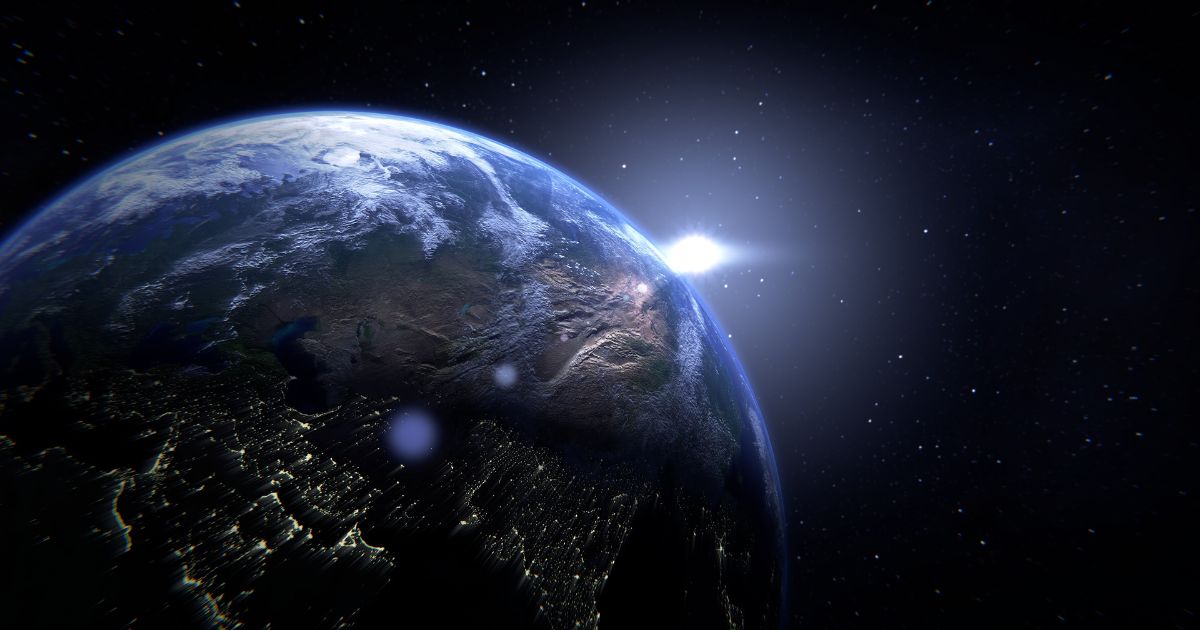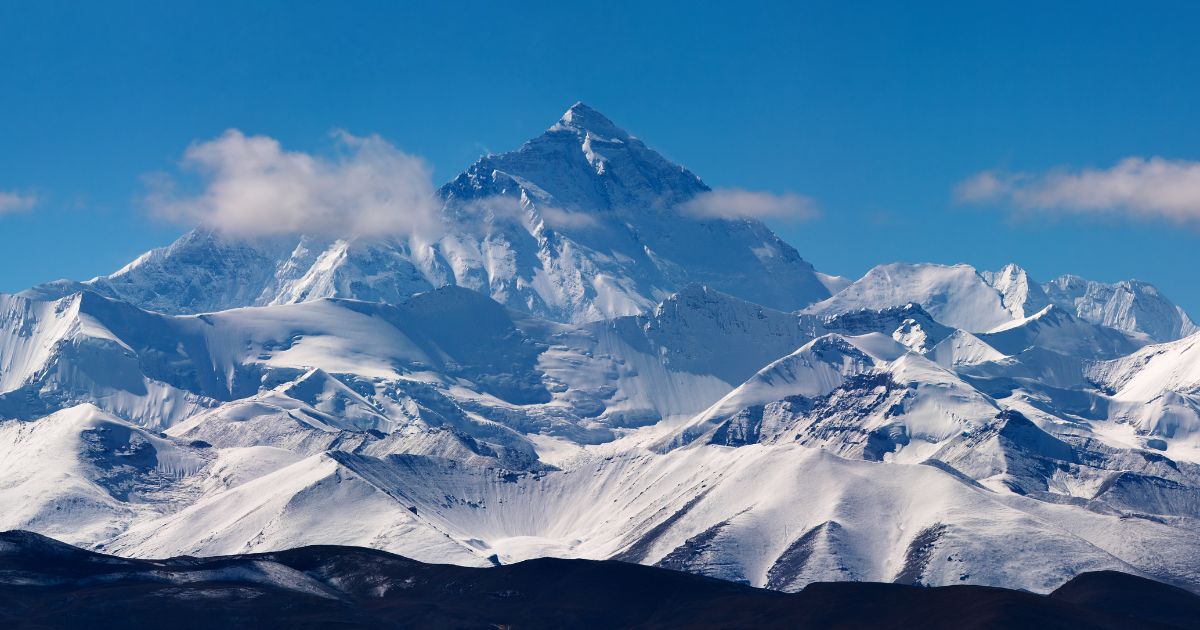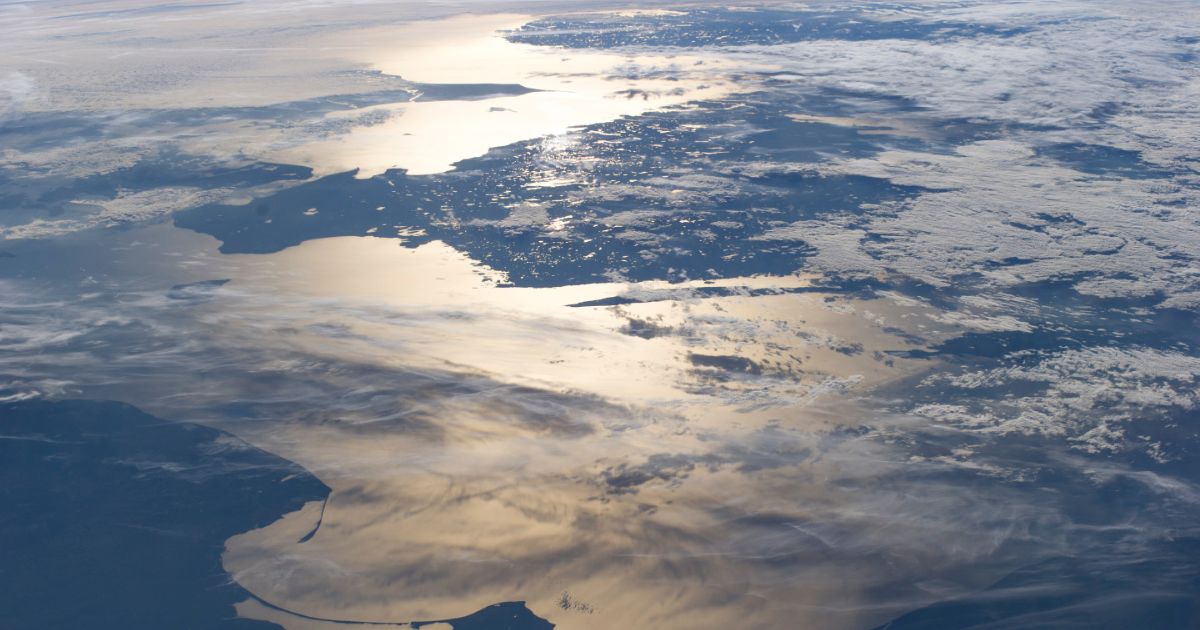Earth is the planet we call home. No other planet ever found can house living beings of any kind. Home to many beautiful landscapes, deadly volcanos, and vast oceans, Earth has it all. Take a break from visiting other planets in the solar system and learn more about our unique planet. Below are over 50 facts about Earth and 10 frequently asked questions.

Earth seen from a satellite
50+ Unique Fun Facts about Earth
Earth is the only planet in the Solar System not named after a Greek or Roman god/goddess
The Earth is the third planet from the Sun
It takes Earth 365 days to orbit the Sun
Earth has one moon, known as Luna in Latin
The moon is slowly drifting away from Earth
Earth is the densest planet in the Solar System
Earth travels around the Sun at about 66,600 miles per hour (107,208 kilometers per hour)
The days on Earth are gradually getting longer. Its rotation slows by about 1.7 milliseconds every century as the Moon exerts its gravitational force
Earth tilts about 23.5 degrees on its axis. This is why we have seasons
Earth’s inner core is solid and its outer core is liquid
The iron and nickel inside of Earth’s core is what powers its magnetic field
Earth’s magnetic field has flipped many times throughout its history
Earth’s atmosphere is made up of 78% Nitrogen, 21% Oxygen, and small amounts of other gases
The atmosphere protects us from harmful solar radiation
The Earth has 4 layers. The inner core, outer core, mantle, and crust
Earth’s crust is divided into many tectonic plates that float on the mantle. These plates move around and collide with each other, creating earthquakes, mountains and valleys
Earth’s diameter is about 7,918 miles (12,742 kilometers)
Earth is not a perfect circle, it bulges around the equator
Gravity on Earth is not uniform because the planet is not a perfect circle
Earth’s rotation influences weather patterns and ocean currents. This is called the Coriolis effect
The largest of Earth’s five oceans is the Pacific Ocean
The Nile River is the longest in the world, about 4,132 miles (6,650 kilometers) long
Mount Everest is the tallest mountain in the world, reaching 29,029 feet (8,848 meters) tall

The world’s tallest mountain_ Mt. Everest
The largest desert on Earth is Antarctica. This is because the continent receives so little precipitation that it is dry enough to be considered a desert
The average surface temperature on Earth is 57 degrees Fahrenheit (14 degrees Celcius)
The hottest place on Earth is Death Valley in California. Temperatures here have reached 134 degrees Fahrenheit (56.7 degrees Celcius)
The coldest place on Earth is the East Antarctic Plateau in Antarctica. Temperatures here have plummeted to -128.6 degrees Fahrenheit (-89.2 degrees Celcius)
The Great Barrier Reef in Australia is the largest living structure on Earth
Lighting strikes Earth about 100 times per second
The Amazon rainforest produces about 20% of the world’s oxygen
Earth’s longest mountain range is known as the Mid-Atlantic Ridge. This mountain range is mostly underwater and spans from Bourvet Island to just below the North Pole
The Dead Sea is the lowest point on Earth’s surface, about 1,412 feet (430.5 meters) below sea level
The largest volcano on Earth is Mauna Loa in Hawaii
Earth has more than 1,500 active volcanos
The northern and southern lights are caused by solar wind reacting with Earth’s magnetic field
About 10% of Earth is covered by Glaciers
The surface of Earth is covered by 71% water
More than 95% of Earth’s water storage is found in the oceans
The longest day of the year is called the summer solstice, which is on June 21st
The shortest day of the year is called the winter solstice, which is on December 21st
Earth has over 8.7 million different living species
The largest earthquake ever recorded was a magnitude of 9.5 in Chile (1960)
The first human to orbit Earth was Yuri Gagarin in 1961
The deepest mine on Earth is 2.5 miles (4 kilometers) deep
The Great Lakes are the largest freshwater deposit in the world, containing 84% of North America’s freshwater supply
The tallest waterfall on Earth is Angel Falls, reaching 3,212 feet (979 meters) tall
Greenland is Earth’s largest island
Earth’s surface is slowly changing due to erosion and weathering
Panama is the only place on Earth where you can see both the sunrise and sunset over the ocean
The ozone layer of Earth’s atmosphere protects people from harmful UV radian from the sun
The fastest wind speed ever recorded was 253 miles per hour (408 kilometers per hour) during a tornado in Oklahoma, USA
Earth is located in the Goldilocks Zone of the Solar System, the only place that can support life
Earth is home to about 3 trillion trees
The longest-lasting active city on Earth is Damascus in Syria

Icebergs in Antarctica
Frequently Asked Questions; For Extra Curious Individuals
How fast does the Earth spin?
Earth spins roughly 1,000 miles per hour (about 1,600 kilometers per hour). This means it takes just under 24 hours for the planet to completely rotate.
How far is the moon from Earth?
The moon is farther from Earth than you might expect, about 238,900 miles (384,400 kilometers). It takes about three days to get to the moon using a space shuttle.
How many Earths can fit inside the sun?
The sun is very large compared to Earth. The Sun makes up about 99.8% of the Solar System’s mass! This means about 1.3 million Earth’s could fit inside of the sun.
How far is the sun from Earth?
The sun is about 93 million miles from Earth (about 150 million kilometers) from Earth. Light, the fastest moving thing in the universe takes 8 minutes to reach Earth from the sun.
How many people are on Earth?
Earth’s current population is 8.118 billion people, rapidly increasing.
What is the circumference of the Earth?
Earth is quite big, with a diameter of about 7,926 miles (12,756 kilometers). This means Earth has a circumference of 24,901 miles (40,075 kilometers).
What is the hottest and coldest place on Earth?
Earth has an average temperature of 57 degrees Fahrenheit (14 degrees Celcius). The hottest place on Earth is Death Valley in California. Temperatures here have reached 134 degrees Fahrenheit (56.7 degrees Celcius). The coldest place on Earth is the East Antarctic Plateau in Antarctica. Temperatures here have plummeted to -128.6 degrees Fahrenheit (-89.2 degrees Celcius)

Islands in Earth’s vast oceans
Thanks for exploring Earth with us! These are just 50 of many interesting facts about Earth. Be sure to take advantage of everything our planet offers before leaving for another planet like Mars. Until next time, fellow astronomers!
Want to learn more about the planets in our solar system? Check out these other articles:

Leave a Reply